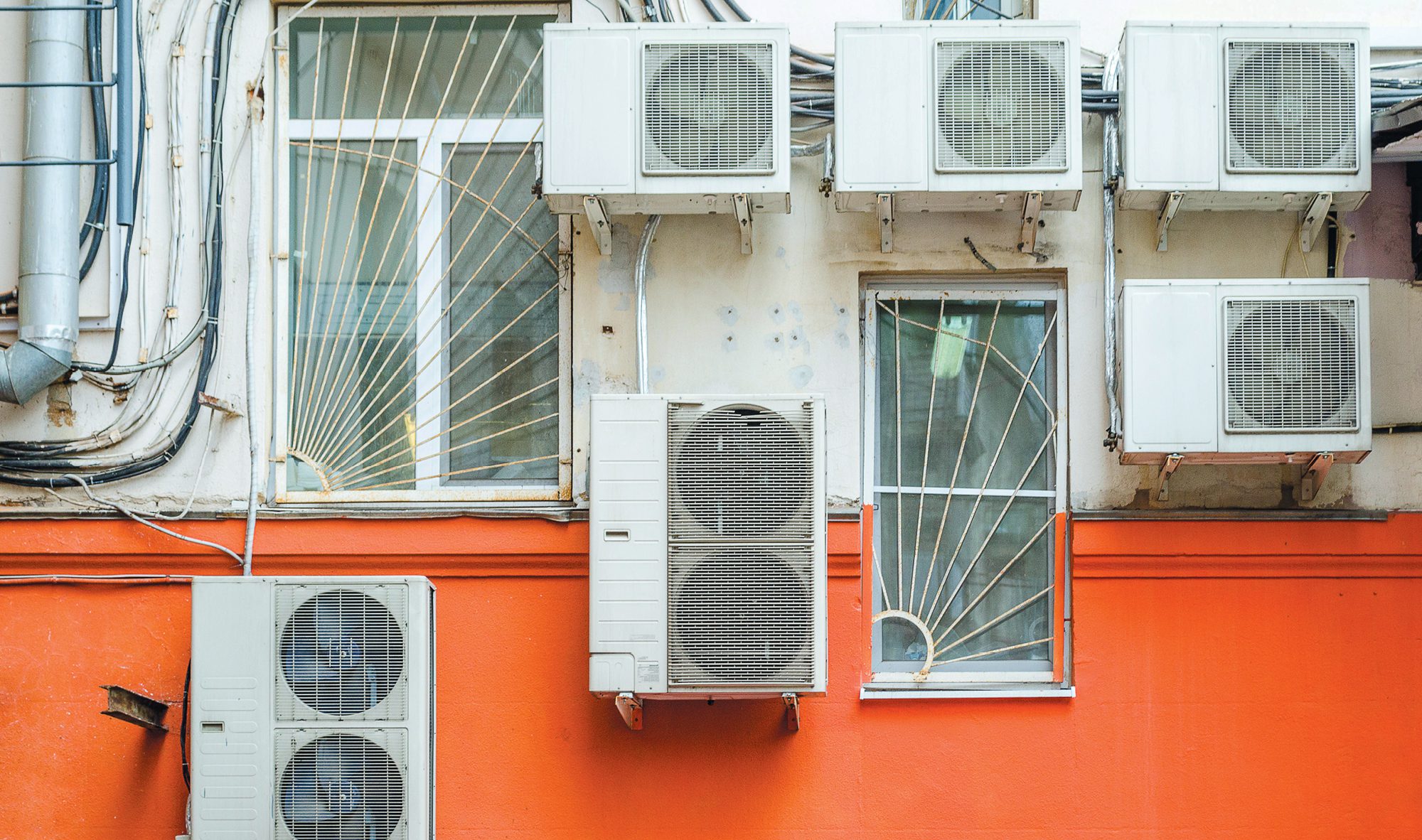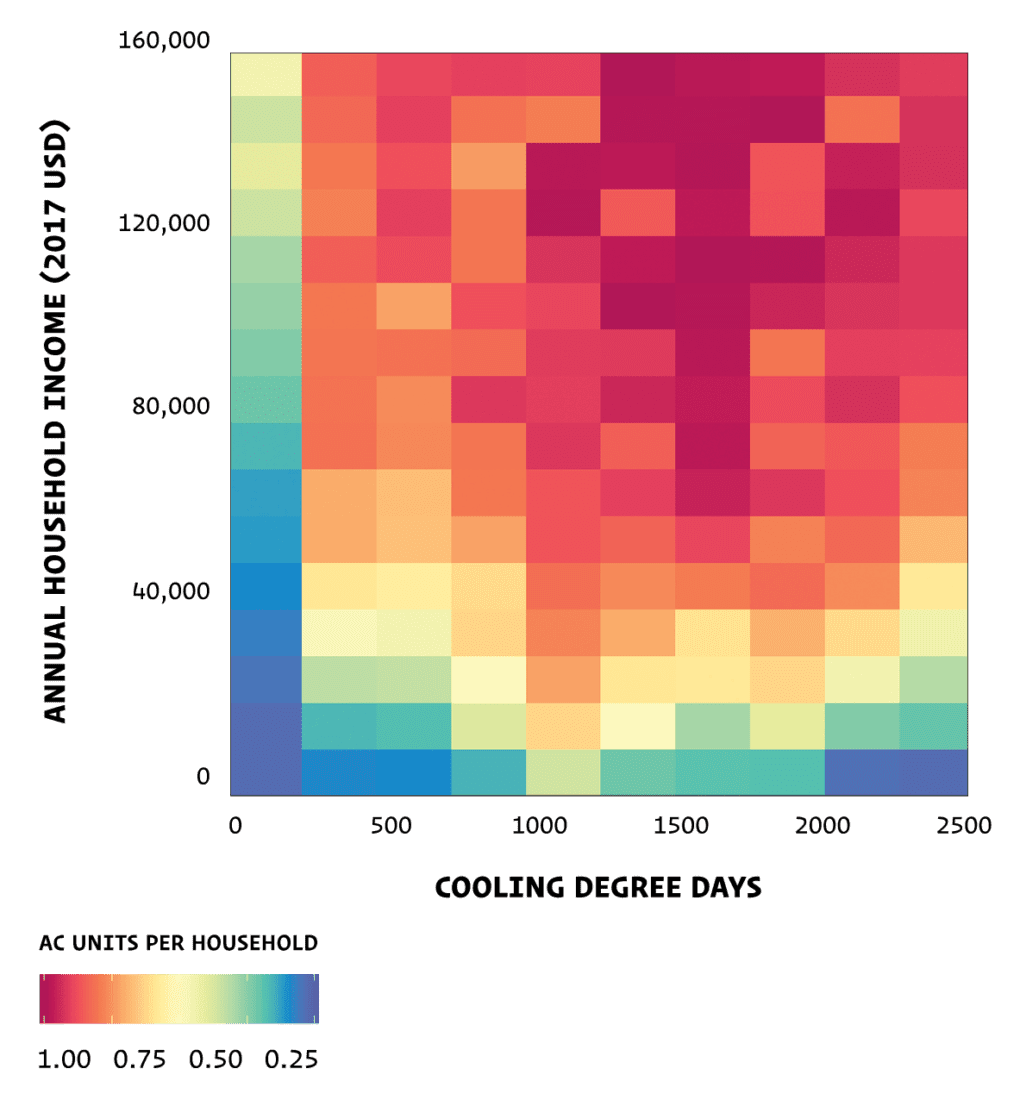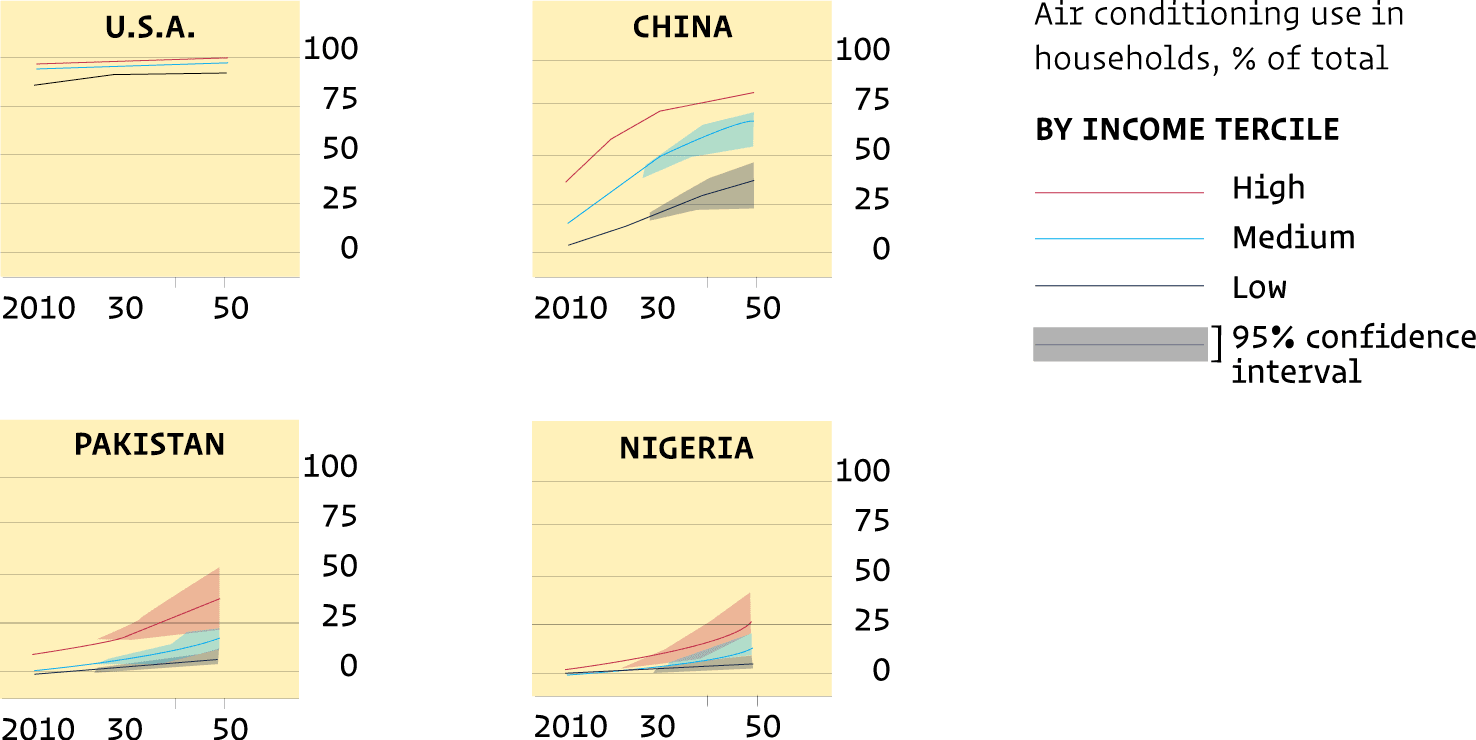The widening wealth gap in access to air conditioning

Though air conditioners contribute to global warming, they’re essential to productivity and learning in hot climates (just ask anyone who’s tried to focus on work in a stifling room). Not to mention overall health: Heat-stroke deaths plummet as AC use increases.
Access to cool air will become even more critical as the planet warms. But it will also become more unequal, concludes a new study co-authored by Haas Professors Lucas Davis, Paul Gertler, and Catherine Wolfram and Stephen Jarvis, PhD 20 (Energy & Resources).
“Every hour, 10,000 new AC units are sold somewhere on the planet,” says Davis, the Jeffrey A. Jacobs Distinguished Professor. “Most of those purchases are in relatively wealthy countries, while in the poorest countries—which are also some of the hottest—only the richest are able to afford them.”
By analyzing household data from 16 countries, the researchers concluded that the overall share of households with air conditioning will increase from 35% in 2020 to 55% in 2050. But most of that expansion is concentrated among people with higher incomes.
Poorer people throughout the world are already more vulnerable to the fallout from climate change, such as more severe storms and flooding. The concern for those focused on fighting global poverty is that unequal access to air conditioning will put the poorest people even further behind.
High Temps + $$$ = AC
 Compiled from data on more than a million households in 16 countries, this heat map shows air conditioning use is most intense (red) in areas that have the hottest climates (most cooling degree days) and highest incomes. Very poor, hot areas use relatively little AC (purple, blue, and green).
Compiled from data on more than a million households in 16 countries, this heat map shows air conditioning use is most intense (red) in areas that have the hottest climates (most cooling degree days) and highest incomes. Very poor, hot areas use relatively little AC (purple, blue, and green).
Cool for Some
The disparity in access to AC will grow ever wider in relatively poor, hot countries. For example, in Pakistan, only 5% of households in the lower third of income are expected to have AC by 2050, compared with 38% of those in the upper third of income. It’s similar in Ghana, Nigeria, and Sierra Leone. Meanwhile, in China, widespread income expansion is expected to bring AC within reach of nearly half of households in the lower third of income. In the U.S., which already has high penetration of air conditioning, nearly everyone will have access by 2050.
